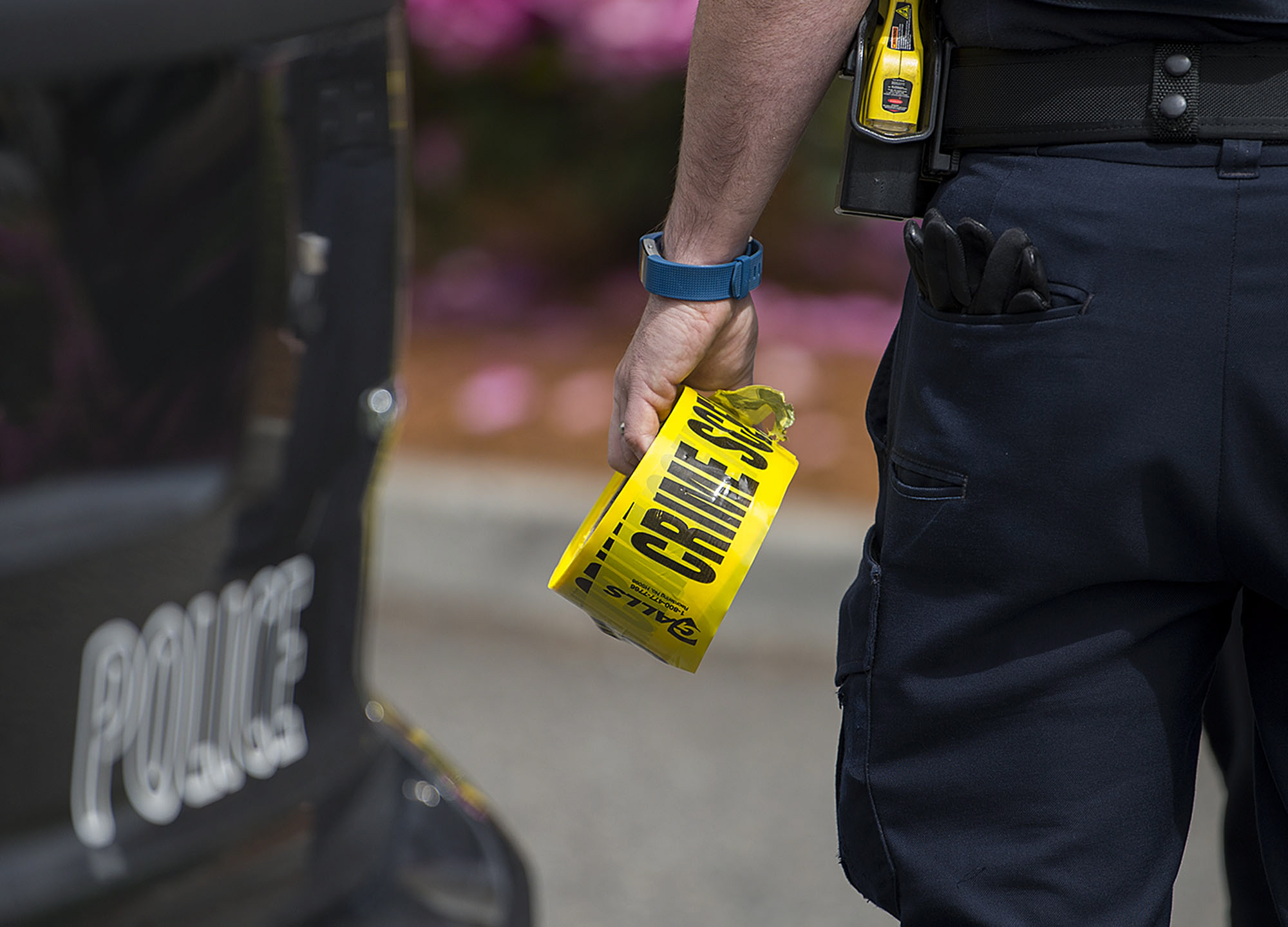The rate of reported violent and property crimes in Clark County decreased slightly from 2015 to 2016, differing from a slight increase in violent crime nationwide, according to new data from the FBI.
In Clark County, the rate of reported violent crimes per 100,000 people declined 2 percent, with the raw number of reported violent crimes not changing and the county’s population growing by about 2 percent, or 9,000 people.
The FBI on Monday released its annual crime report, which collects reports of crimes from police agencies around the country. Violent crimes counted in the data include murder and non-negligent manslaughter, rape, robbery, and aggravated assault.
The data do not include justifiable homicides or unintentional killings that result from recklessness or criminal negligence, such as killing someone in a drunken driving crash.
In 2016, about 76 percent of violent crimes reported were aggravated assaults, and most of the remaining 24 percent were robberies. The proportions were about the same in 2015.
In Vancouver, the violent crime rate dropped 2 percent.
Nationwide, the estimated number of violent crimes grew 4.1 percent from 2015 to 2016, and property crimes dropped 1.3 percent. The FBI said 2016 was the second year in a row with an increase in violent crimes, and the 14th consecutive year of declining property crimes.
Clayton Mosher, a professor in Washington State University Vancouver’s sociology department who focuses on criminology, said the seeming increase in violent crime is somewhat misleading.
“It’s certainly true in places like Chicago and Detroit, and a couple other places, you’re seeing significant increases in violent crime,” he said. “It’s certainly not a national phenomenon.”
However, violent crime nationwide remains well below rates from the 1980s and early 1990s.
Violent crime in 2016 was 18 percent lower than it was in 2007, and the murder rate is down 6 percent from 2007, according to the Associated Press.
Clark County’s violent crime rate for 2016 is actually about 2 percent higher than in 2006, but the rate of reports per 100,000 people has generally been between 200 and 250, with an overall trend downward.
Even so, the changes over time in Vancouver and the rest of Clark County are usually so small it’s safe to say local violent crime rates are largely stable, Mosher said.
“Two percent is pretty much noise, anyway,” Mosher said. He added that local crime rates might actually be slightly lower because he’s not confident that the FBI’s population numbers for the area adequately reflect its growth.
The rate of reported property crimes per 100,000 people declined 8 percent for Clark County from 2015 to 2016, according to the FBI, mirroring the overall decline nationwide. Clark County’s reported property crime rate in 2016 was 24 percent less than in 2011, and 35 percent less than in 2006.
Vancouver’s property crime rate declined 3 percent from 2015 to last year.
The long-term drop may seem substantial, but Mosher cautioned that the report, created through the FBI’s Uniform Crime Reporting program, has a tendency to undercount crimes in part because the crimes it collects are limited. The FBI’s property crime tracking for the report is limited to incidents of burglary, larceny or theft, and motor vehicle theft.
Furthermore, Mosher said, the report only includes the most serious crime in a given incident. That means where there was an assault and car theft, only the assault would make the count in the FBI report.




